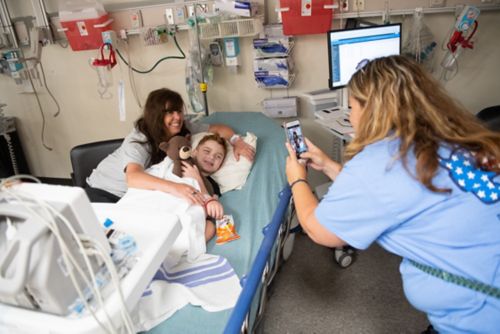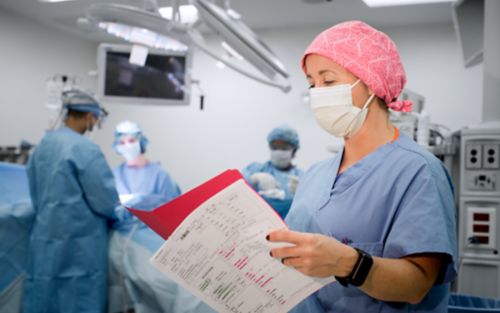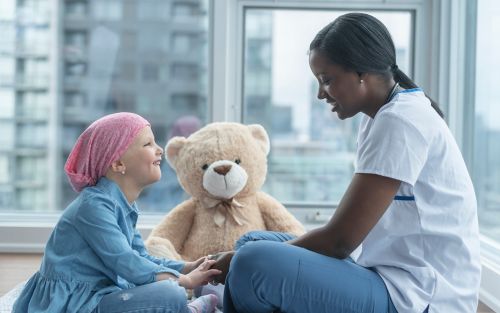The goal of anesthesia is to keep patients safe and comfortable before, during, and after tests and medical procedures.
A doctor trained to give anesthesia and monitor patients is called an anesthesiologist. A nurse who has advanced training in anesthesia is called a certified registered nurse anesthetist (CRNA).
There are 3 main types of anesthesia: general, regional, and local.
- General anesthesia causes a complete loss of consciousness. It is often described as a “deep sleep.” But unlike normal sleep, your child will not feel sensations such as pain. Your child may breathe in the medicine through a mask or breathing tube. Or they may get medicine through a vein (intravenously or IV).
- Regional anesthesia prevents pain or causes a loss of feeling to a larger area of the body by affecting a group of nerves. Regional anesthesia is given through an injection or a catheter (a small tube). The medicine is given near the nerves that affect only that area of the body. Examples of regional anesthesia are:
- Preventing pain to a leg
- Epidural or spinal anesthesia. This type of anesthesia prevents pain in a region of the body such as the legs.
- Local anesthesia causes numbness or prevents pain in a small, specific area of the body. Your child may get the medicine as a shot or as an ointment or spray on the skin. An example of local anesthesia is numbing the skin before treating a cut.
The medicines used during anesthesia depend on several factors:
- Type of procedure
- How long the procedure will last
- Age and size of the child
- Health conditions and other medical needs
- Anesthesia history
- Allergies or reactions to certain medicines
Getting ready for general anesthesia
Before your child has general anesthesia, the care team will:
- Meet with you and your child (pre-op visit)
- Do a complete medical history and physical exam
- Make sure they have the right equipment for the type of procedure
Talk with your child’s anesthesia providers about the anesthesia plan and what to expect. A child life specialist may also work with the medical team to help your child prepare for anesthesia. Be sure to follow the care team’s instructions to help things go smoothly.
NPO instructions
Patients are usually told not to eat or drink for a certain time before having general anesthesia. This is known as fasting guidelines or “NPO.” NPO is short for a Latin phrase that means “nothing by mouth.”
Having anything in the stomach during anesthesia puts patients at risk for getting food or liquid in the lungs. Even chewing gum or sucking on hard candy could be a risk and cause a delay in the procedure.
Talk to the care team about your child’s other medicines. The care team may suggest changes to medicines before or after anesthesia.
Always follow the care team’s instructions. This is important to keep patients safe.
Possible risks of anesthesia
The risks of anesthesia depend on the type of anesthesia and procedure.
Usually, side effects of anesthesia are minor and go away on their own.
After general anesthesia, your child may:
- Feel drowsy
- Have a headache
- Feel sick to their stomach or vomit
- Feel cold or have chills
- Have trouble thinking
- Have loss of coordination or balance
Other complications may be more serious. Certain medicines can cause heart, blood pressure, and breathing problems in some patients. A serious reaction that may occur if you have a rare gene change is malignant hyperthermia.
Patients who have serious medical conditions have a higher risk for problems related to general anesthesia. The anesthesia team watches patients closely before, during, and after anesthesia.
Anesthesia is safe for most patients. But health care providers try to limit the use of general anesthesia in children. This is because too much general anesthesia could affect brain development, especially for children under age 3.
Talk to your care team about anesthesia options. There might be other ways to help your child stay still and manage anxiety during certain procedures such as imaging tests.
Questions to ask your care team





